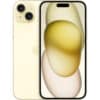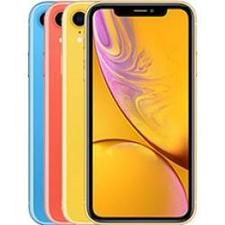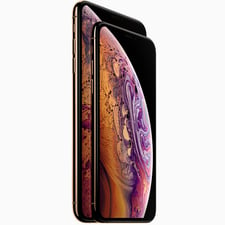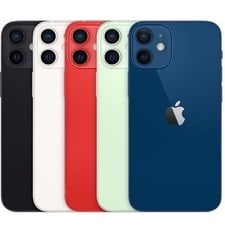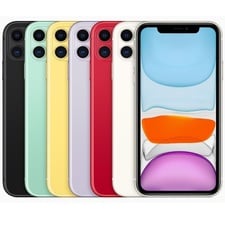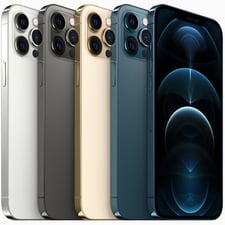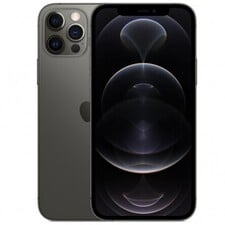Exploring the Apple iPhone 15 Plus: A Comprehensive Comparison with its Predecessor
Apple’s annual product launches have become much-anticipated events, with each new iPhone release generating significant buzz and excitement among tech enthusiasts and consumers alike. The introduction of the iPhone 15 Plus, the successor to the iPhone 14 Plus, has left many potential buyers wondering which model is the right choice for them. In this in-depth analysis, we will delve into the key differences between these two devices to help you make an informed decision.
A Glimpse of the iPhone 15 Plus
The iPhone 15 Plus marks the second iteration of the resurrected “Plus” model, initially introduced at the Wonderlust 2023 event. Positioned as Apple’s offering for those who desire a large-screen iPhone without the premium price tag, the iPhone 15 Plus brings several notable changes compared to its predecessor, the iPhone 14 Plus. Let’s explore these differences in detail:
1. A16 Chip vs. A15 Chip
One of the most significant differentiators between the iPhone 15 Plus and the iPhone 14 Plus is the chipset. The iPhone 15 Plus features the A16 chip, while the iPhone 14 Plus is powered by the A15 chip. This upgrade in processing power promises improved performance, efficiency, and faster 5G connectivity. Notably, the A16 chip is manufactured using a more advanced 4nm process, which should contribute to better overall efficiency.
2. Identical 6GB RAM
Both the iPhone 15 Plus and the iPhone 14 Plus come equipped with 6GB of LPDDR5 RAM. While there’s no increase in RAM capacity, this configuration ensures smooth multitasking and responsive performance for a wide range of applications and tasks.
3. Same Screen Size and Resolution
In terms of display, there are no notable changes. Both devices sport the same 6.7-inch OLED display with a resolution of 2796×1290 pixels. This results in a pixel density of 460 pixels per inch (PPI). While this display configuration is consistent between the two models, there are crucial differences in the screen design.
4. New Pill-Shaped Cutout
The most apparent change in the iPhone 15 Plus’s display is the introduction of a pill-shaped cutout for the front camera, replacing the notch that has been a hallmark of recent iPhone models. This change eliminates the intrusive notch, providing a more immersive viewing experience. This design shift is accompanied by the incorporation of the Dynamic Island software feature, enhancing the device’s visual appeal.
5. No Change in Refresh Rate
Both the iPhone 15 Plus and the iPhone 14 Plus continue to feature a traditional 60Hz refresh rate. This means that users won’t experience the smoother scrolling and responsiveness offered by the ProMotion display technology found in the Pro models. Consequently, the iPhone 15 Plus does not support an Always-on display mode, as ProMotion is relied upon to manage battery life when this feature is enabled.
6. Improved Brightness
While the refresh rate remains the same, there is a noticeable bump in brightness on the iPhone 15 Plus. The device can achieve up to 1,600 nits peak HDR and up to 2,000 nits peak outdoor brightness. This increase in brightness contributes to better outdoor visibility and an enhanced HDR viewing experience.
7. Same Battery Size with Improved Efficiency
The battery size of the iPhone 15 Plus remains consistent with its predecessor, featuring a substantial 4,325mAh battery. However, due to the efficiency gains associated with the A16 chip and the 4nm manufacturing process, the iPhone 15 Plus is expected to offer even better battery life. This efficiency improvement, coupled with the same 60Hz refresh rate, should result in extended usage without the need for frequent recharging.
8. Design and Size
In terms of design and size, there are minimal differences between the iPhone 15 Plus and the iPhone 14 Plus. Both devices share the same physical dimensions, ensuring a familiar feel for users transitioning from one model to the other. However, the iPhone 15 Plus introduces new color options, adding a touch of personalization to the user experience.
9. Switch from Lightning to USB-C
One notable change in the iPhone 15 Plus is the transition from the Lightning port to a USB-C port. While this change may not significantly impact day-to-day usage, it brings the iPhone 15 Plus in line with modern industry standards. USB-C offers advantages in terms of faster data transfer and charging speeds, although the fastest speeds are reserved for the Pro models.
10. Available Colors
The iPhone 15 Plus offers a fresh selection of colors for users to choose from, allowing for greater personalization. The available colors for the iPhone 15 Plus include:
- Black
- Green
- Pink
- Blue
- Yellow
In contrast, the iPhone 14 Plus was available in the following colors:
- Midnight
- Starlight
- (PRODUCT)RED
- Purple
- Blue
- Yellow
11. Software: iOS 17
Both the iPhone 15 Plus and the iPhone 14 Plus run on iOS 17, which was officially announced and available for download starting September 18. iOS 17 introduces a plethora of new features and enhancements across various aspects of the user experience. These improvements encompass Phone, iMessage, FaceTime updates, and innovative features like NameDrop. The software enhancements promise to make everyday tasks more seamless and enjoyable for users.
12. Enhanced Camera System
The camera system of the iPhone 15 Plus receives a significant upgrade compared to its predecessor. The device inherits the primary sensor from the iPhone 14 Pro and Pro Max models, featuring a 48-megapixel main sensor. This represents a notable improvement over the 12-megapixel main camera on the iPhone 14 Plus.
The increase in pixel count allows for more detailed and vibrant photos, even in challenging lighting conditions. Interestingly, the iPhone 15 Plus employs a technique where images default to 24MP, combining 12MP pixel-binned shots with additional detail to create higher-resolution photos. Additionally, the device offers Optical-quality 2x telephoto, effectively providing a 2x crop from the 48MP main sensor for versatile zoom capabilities.
The iPhone 15 Plus also benefits from improved image processing algorithms, particularly in the Portrait photography department. While the ultrawide camera remains consistent with the previous generation, featuring a 12-megapixel sensor with a 120-degree field of view, the overall camera system enhancements promise to deliver a more capable and creative photography experience.
13. Audio Quality and Haptics
The iPhone 15 Plus retains the audio quality and haptic feedback system from its predecessor, the iPhone 14 Plus. While there are no significant changes in this aspect, it’s worth noting that both models provide an excellent audio experience with well-defined sound, robust bass, and minimal distortion at higher volumes. The stereo speaker setup and responsive haptic motor contribute to an immersive audio experience.
14. Battery Life and Charging
As mentioned earlier, the iPhone 15 Plus maintains the same battery size as the iPhone 14 Plus, which is estimated to be around 4,325mAh. While the capacity remains unchanged, the device benefits from the efficiency gains associated with the A16 chip and the 4nm manufacturing process. This efficiency improvement, coupled with the same 60Hz refresh rate, is expected to result in improved battery life.
In terms of charging, both models support up to 20W wired charging via their respective ports. This allows for rapid charging, with the capability to reach a 50% charge in just 30 minutes. It’s important to note that the charging speeds remain consistent between the two models. However, the introduction of the USB-C port on the iPhone 15 Plus brings added convenience and compatibility with modern accessories and cables.
15. Pricing and Conclusion
The pricing of the iPhone 15 Plus aligns with that of its predecessor, starting at $1449. Considering the numerous similarities between the iPhone 15 Plus and the iPhone 14 Plus, existing iPhone 14 Plus owners may find limited incentive to upgrade. However, for those using older iPhone models who prioritize a large screen, extended battery life, and the benefits of a long support cycle, the iPhone 15 Plus offers an attractive option.
In summary, the iPhone 15 Plus represents an evolution rather than a revolution in Apple’s smartphone lineup. While it brings several notable enhancements, such as the removal of the notch, a higher-resolution main camera, and the introduction of the A16 chip, it maintains the core elements that users appreciate in the iPhone 14 Plus. As with any tech purchase, the decision to upgrade should consider individual needs, priorities, and budget.
With the iPhone 15 Plus, Apple continues its tradition of delivering a compelling smartphone experience, catering to users who seek a balance between performance, design, and affordability. As technology enthusiasts and consumers eagerly await its release, the iPhone 15 Plus promises to be a worthy addition to Apple’s acclaimed lineup of mobile devices.
In Conclusion
The iPhone 15 Plus represents a culmination of cutting-edge technology, meticulous design, and thoughtful innovation. With its extensive network compatibility, remarkable display, powerful performance, and versatile camera system, this device is poised to set new standards in the world of smartphones. As Apple continues to push the boundaries of what’s possible, the iPhone 15 Plus stands as a testament to their commitment to excellence and their unwavering dedication to providing users with the very best in mobile technology. As the device’s launch date approaches, anticipation continues to build, and consumers can eagerly look forward to experiencing the future of smartphones with the iPhone 15 Plus.
NETWORK
Technology
GSM / CDMA / HSPA / EVDO / LTE / 5G
2G bands GSM 850 / 900 / 1800 / 1900 – SIM 1 & SIM 2 (dual-SIM)
CDMA 800 / 1900
3G bands HSDPA 850 / 900 / 1700(AWS) / 1900 / 2100
CDMA2000 1xEV-DO
4G bands 1, 2, 3, 4, 5, 7, 8, 12, 13, 17, 18, 19, 20, 25, 26, 28, 30, 32, 34, 38, 39, 40, 41, 42, 46, 48, 53, 66 – A3094
1, 2, 3, 4, 5, 7, 8, 12, 13, 14, 17, 18, 19, 20, 25, 26, 28, 29, 30, 32, 34, 38, 39, 40, 41, 42, 46, 48, 53, 66, 71 – A2847
1, 2, 3, 4, 5, 7, 8, 11, 12, 13, 14, 17, 18, 19, 20, 21, 25, 26, 28, 29, 30, 32, 34, 38, 39, 40, 41, 42, 46, 48, 53, 66, 71 – A3093
1, 2, 3, 4, 5, 7, 8, 12, 13, 17, 18, 19, 20, 25, 26, 28, 30, 32, 34, 38, 39, 40, 41, 42, 46, 48, 66 – A3096
5G bands 1, 2, 3, 5, 7, 8, 12, 20, 25, 26, 28, 30, 38, 40, 41, 48, 53, 66, 70, 77, 78, 79 SA/NSA/Sub6 – A3094
1, 2, 3, 5, 7, 8, 12, 14, 20, 25, 26, 28, 29, 30, 38, 40, 41, 48, 53, 66, 70, 71, 77, 78, 79, 258, 260, 261 SA/NSA/Sub6/mmWave – A2847
1, 2, 3, 5, 7, 8, 12, 14, 20, 25, 26, 28, 29, 30, 38, 40, 41, 48, 53, 66, 70, 71, 75, 76, 77, 78, 79 SA/NSA/Sub6 – A3093
1, 2, 3, 5, 7, 8, 12, 20, 25, 26, 28, 30, 38, 40, 41, 48, 66, 70, 77, 78, 79 SA/NSA/Sub6 – A3096
Speed HSPA, LTE-A, 5G, EV-DO Rev.A 3.1 Mbps
BODY
Dimensions 160.9 x 77.8 x 7.8 mm (6.33 x 3.06 x 0.31 in)
Weight 201 g (7.09 oz)
Build Glass front (Corning-made glass), glass back (Corning-made glass), aluminum frame
SIM Nano-SIM and eSIM – International
Dual eSIM with multiple numbers – USA
Dual SIM (Nano-SIM, dual stand-by) – China
IP68 dust/water resistant (up to 6m for 30 min)
Apple Pay (Visa, MasterCard, AMEX certified)
DISPLAY
Type Super Retina XDR OLED, HDR10, Dolby Vision, 1000 nits (HBM), 2000 nits (peak)
Size 6.7 inches, 110.2 cm2 (~88.0% screen-to-body ratio)
Resolution 1290 x 2796 pixels, 19.5:9 ratio (~460 ppi density)
Protection Ceramic Shield glass
PLATFORM
OS iOS 17
Chipset Apple A16 Bionic (4 nm)
CPU Hexa-core (2×3.46 GHz Everest + 4×2.02 GHz Sawtooth)
GPU Apple GPU (5-core graphics)
MEMORY
Card slot No
Internal 128GB 6GB RAM, 256GB 6GB RAM, 512GB 6GB RAM
NVMe
MAIN CAMERA
Dual 48 MP, f/1.6, 26mm (wide), 1.0µm, dual pixel PDAF, sensor-shift OIS
12 MP, f/2.4, 13mm, 120˚ (ultrawide)
Features Dual-LED dual-tone flash, HDR (photo/panorama)
Video 4K@24/25/30/60fps, 1080p@25/30/60/120/240fps, HDR, Dolby Vision HDR (up to 60fps), Cinematic mode (4K@30fps), stereo sound rec.
SELFIE CAMERA
Single 12 MP, f/1.9, 23mm (wide), 1/3.6″, PDAF
SL 3D, (depth/biometrics sensor)
Features HDR, Cinematic mode (4K@30fps)
Video 4K@24/25/30/60fps, 1080p@25/30/60/120fps, gyro-EIS
SOUND
Loudspeaker Yes, with stereo speakers
3.5mm jack No
COMMS
WLAN Wi-Fi 802.11 a/b/g/n/ac/6, dual-band, hotspot
Bluetooth 5.3, A2DP, LE
Positioning GPS, GLONASS, GALILEO, BDS, QZSS
NFC Yes
Radio No
USB USB Type-C 2.0, DisplayPort
FEATURES
Sensors Face ID, accelerometer, gyro, proximity, compass, barometer
Ultra Wideband 2 (UWB) support
Emergency SOS via satellite (SMS sending/receiving)
BATTERY
Type Li-Ion, non-removable
Charging Wired, 50% in 30 min (advertised)
15W wireless (MagSafe)
7.5W wireless (Qi)
Disclaimer. We can not guarantee that the information on this page is 100% correct.


